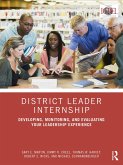Theodore J. Kowalski
Effective Communication for District and School Administrators (eBook, PDF)
31,95 €
31,95 €
inkl. MwSt.
Sofort per Download lieferbar

16 °P sammeln
31,95 €
Als Download kaufen

31,95 €
inkl. MwSt.
Sofort per Download lieferbar

16 °P sammeln
Jetzt verschenken
Alle Infos zum eBook verschenken
31,95 €
inkl. MwSt.
Sofort per Download lieferbar
Alle Infos zum eBook verschenken

16 °P sammeln
Theodore J. Kowalski
Effective Communication for District and School Administrators (eBook, PDF)
- Format: PDF
- Merkliste
- Auf die Merkliste
- Bewerten Bewerten
- Teilen
- Produkt teilen
- Produkterinnerung
- Produkterinnerung

Bitte loggen Sie sich zunächst in Ihr Kundenkonto ein oder registrieren Sie sich bei
bücher.de, um das eBook-Abo tolino select nutzen zu können.
Hier können Sie sich einloggen
Hier können Sie sich einloggen
Sie sind bereits eingeloggt. Klicken Sie auf 2. tolino select Abo, um fortzufahren.

Bitte loggen Sie sich zunächst in Ihr Kundenkonto ein oder registrieren Sie sich bei bücher.de, um das eBook-Abo tolino select nutzen zu können.
The book is a unique and necessary contribution to the literature on school administration. Research, theory, and practice were melded to produce a book that can be used as a primary or supplemental text or as professional growth resource for practitioners. Communication scholars, especially since 1990, have concluded that competence must be defined and studied in the context of professions. As such, a growing number of medical schools, law schools, and business schools have integrated communication into their curricula. This book provides a resource for such integration into the study and practice of district and school administration.…mehr
- Geräte: PC
- mit Kopierschutz
- eBook Hilfe
- Größe: 4.18MB
Andere Kunden interessierten sich auch für
![School District Master Planning (eBook, PDF) School District Master Planning (eBook, PDF)]() Kelley D. CareySchool District Master Planning (eBook, PDF)51,95 €
Kelley D. CareySchool District Master Planning (eBook, PDF)51,95 €![Change Leadership Cases for District and School Leaders (eBook, PDF) Change Leadership Cases for District and School Leaders (eBook, PDF)]() Coby V. MeyersChange Leadership Cases for District and School Leaders (eBook, PDF)42,95 €
Coby V. MeyersChange Leadership Cases for District and School Leaders (eBook, PDF)42,95 €![School District Budgeting (eBook, PDF) School District Budgeting (eBook, PDF)]() William T. HartmanSchool District Budgeting (eBook, PDF)69,95 €
William T. HartmanSchool District Budgeting (eBook, PDF)69,95 €![School Administrators and Technology (eBook, PDF) School Administrators and Technology (eBook, PDF)]() Bridget M. ConnorSchool Administrators and Technology (eBook, PDF)24,95 €
Bridget M. ConnorSchool Administrators and Technology (eBook, PDF)24,95 €![Educators at the Bargaining Table (eBook, PDF) Educators at the Bargaining Table (eBook, PDF)]() Todd A. DemitchellEducators at the Bargaining Table (eBook, PDF)21,95 €
Todd A. DemitchellEducators at the Bargaining Table (eBook, PDF)21,95 €![Evaluating Boards and Administrators (eBook, PDF) Evaluating Boards and Administrators (eBook, PDF)]() Jeffrey L. BullerEvaluating Boards and Administrators (eBook, PDF)19,95 €
Jeffrey L. BullerEvaluating Boards and Administrators (eBook, PDF)19,95 €![District Leader Internship (eBook, PDF) District Leader Internship (eBook, PDF)]() Gary E. MartinDistrict Leader Internship (eBook, PDF)39,95 €
Gary E. MartinDistrict Leader Internship (eBook, PDF)39,95 €-
-
-
The book is a unique and necessary contribution to the literature on school administration. Research, theory, and practice were melded to produce a book that can be used as a primary or supplemental text or as professional growth resource for practitioners. Communication scholars, especially since 1990, have concluded that competence must be defined and studied in the context of professions. As such, a growing number of medical schools, law schools, and business schools have integrated communication into their curricula. This book provides a resource for such integration into the study and practice of district and school administration.
Produktdetails
- Produktdetails
- Verlag: Bloomsbury eBooks US
- Seitenzahl: 224
- Erscheinungstermin: 20. August 2015
- Englisch
- ISBN-13: 9798216237310
- Artikelnr.: 74841582
- Verlag: Bloomsbury eBooks US
- Seitenzahl: 224
- Erscheinungstermin: 20. August 2015
- Englisch
- ISBN-13: 9798216237310
- Artikelnr.: 74841582
- Herstellerkennzeichnung Die Herstellerinformationen sind derzeit nicht verfügbar.
Theodore J. Kowalski is professor and the Kuntz Family Endowed Chair in Educational Administration at the University of Dayton. The author of 32 books, he is a former superintendent and college of education dean.
Preface
Chapter 1: Communication Basics
IntroductionCommunication
CharacteristicsFormFlowStatusActionSymmetryTheoretical
PerspectivesClassical theoriesHuman relations theoriesSystems
theoriesSynthesisReflective questions
Chapter 2: Communicating Competently
IntroductionCommunicative behaviorInstitutional dimensionPersonal
dimensionAvoiding common problemsInsufficient forethoughtOrganizational
constraintsPersonal constraintsInadequate evaluationComplementary and
Relational CommunicationCommunicative competenceSynthesisReflective
Questions
Chapter 3: Leadership and Relationships
IntroductionUnderstanding LeadershipLeadership, management, and
administrationFormal versus informal leadershipImportance of
RelationshipsCommunicative behavior and relationshipsRelationships
matterSynthesisReflective Questions
Chapter 4: Problem Solving, Decision Making, and Critical Thinking
IntroductionProblem SolvingProblem framingStagesDecision MakingTypes of
decisionsGroup decision makingCritical ThinkingLanguage and
communicationReflectionSynthesisReflective Questions
Chapter 5: Organizational Communication
IntroductionSchools as Loosely Coupled OrganizationsSchools and
couplingAdvantages and disadvantages of loose couplingContemporary
perspectiveCommunication NetworksFormal versus informal networksBridges or
buffersBeneficial propertiesConstructing and applying evidenceEvaluating
networksSynthesisReflective Questions
Chapter 6: School Governance and Democratic Administration
IntroductionCitizen Involvement in School GovernanceDemocratic
localismRepresentative democracyCurrent conditionsDemocratic
AdministrationHistorical contextThe second coming Democratic administration
and communicationSynthesisReflective Questions
Chapter 7: Climate, Culture, and the Learning Organization
IntroductionSchool Climate Elements Closed and open climatesSchool
CultureElementsEffectsCulture and communicationWhy culture change is
difficultSchool as a Learning OrganizationOrganizational learningA learning
cultureSynthesisReflective Questions
Chapter 8: Initiating and Sustaining Planned Change
IntroductionContemporary School Reform1983-1989Post 1989Change
ProcessesEmpirical-rationalPower-coerciveNormative-reeducativeProcess
Issues: Involvement and CommunicationInclusivenessCommunicating
appropriatelySynthesisReflective Questions
Chapter 9: School Partnerships
IntroductionUnderstanding PartnershipsDefinitionLevels of
AutonomyOperational CharacteristicsMotivesCommunity
stakeholdersEducatorsCollaborating organizations/groupsWhy Partnerships
Succeed or FailEffective PracticesPotential PitfallsSynthesisReflective
Questions
Chapter 10: Managing Conflict
IntroductionOrganizational ConflictDefining conflictConflict in
schoolsSources, Types, and ContaminantsSources and
typesContaminantsManagement System and StrategiesSystemStrategiesConflict
Management and CommunicationSynthesisReflective Questions
Chapter 11: Conducting a Referendum Campaign
IntroductionKey Administrative ResponsibilitiesVerifying the needMarketing
Conducting the CampaignOrganizationProcessPotential pitfallsEvaluating
outcomesImportance of CommunicationSynthesisReflective Questions
Chapter 12: Relationships with Media Personnel
IntroductionWorking with JournalistsPreparationMaking relationships
positiveInitiating Media CoveragePress releasesPress conferencesElectronic
Media InterviewsVideoAudioCrisis CommunicationBefore the crisisDuring the
crisisAfter the crisisSynthesisReflective Questions
Chapter 1: Communication Basics
IntroductionCommunication
CharacteristicsFormFlowStatusActionSymmetryTheoretical
PerspectivesClassical theoriesHuman relations theoriesSystems
theoriesSynthesisReflective questions
Chapter 2: Communicating Competently
IntroductionCommunicative behaviorInstitutional dimensionPersonal
dimensionAvoiding common problemsInsufficient forethoughtOrganizational
constraintsPersonal constraintsInadequate evaluationComplementary and
Relational CommunicationCommunicative competenceSynthesisReflective
Questions
Chapter 3: Leadership and Relationships
IntroductionUnderstanding LeadershipLeadership, management, and
administrationFormal versus informal leadershipImportance of
RelationshipsCommunicative behavior and relationshipsRelationships
matterSynthesisReflective Questions
Chapter 4: Problem Solving, Decision Making, and Critical Thinking
IntroductionProblem SolvingProblem framingStagesDecision MakingTypes of
decisionsGroup decision makingCritical ThinkingLanguage and
communicationReflectionSynthesisReflective Questions
Chapter 5: Organizational Communication
IntroductionSchools as Loosely Coupled OrganizationsSchools and
couplingAdvantages and disadvantages of loose couplingContemporary
perspectiveCommunication NetworksFormal versus informal networksBridges or
buffersBeneficial propertiesConstructing and applying evidenceEvaluating
networksSynthesisReflective Questions
Chapter 6: School Governance and Democratic Administration
IntroductionCitizen Involvement in School GovernanceDemocratic
localismRepresentative democracyCurrent conditionsDemocratic
AdministrationHistorical contextThe second coming Democratic administration
and communicationSynthesisReflective Questions
Chapter 7: Climate, Culture, and the Learning Organization
IntroductionSchool Climate Elements Closed and open climatesSchool
CultureElementsEffectsCulture and communicationWhy culture change is
difficultSchool as a Learning OrganizationOrganizational learningA learning
cultureSynthesisReflective Questions
Chapter 8: Initiating and Sustaining Planned Change
IntroductionContemporary School Reform1983-1989Post 1989Change
ProcessesEmpirical-rationalPower-coerciveNormative-reeducativeProcess
Issues: Involvement and CommunicationInclusivenessCommunicating
appropriatelySynthesisReflective Questions
Chapter 9: School Partnerships
IntroductionUnderstanding PartnershipsDefinitionLevels of
AutonomyOperational CharacteristicsMotivesCommunity
stakeholdersEducatorsCollaborating organizations/groupsWhy Partnerships
Succeed or FailEffective PracticesPotential PitfallsSynthesisReflective
Questions
Chapter 10: Managing Conflict
IntroductionOrganizational ConflictDefining conflictConflict in
schoolsSources, Types, and ContaminantsSources and
typesContaminantsManagement System and StrategiesSystemStrategiesConflict
Management and CommunicationSynthesisReflective Questions
Chapter 11: Conducting a Referendum Campaign
IntroductionKey Administrative ResponsibilitiesVerifying the needMarketing
Conducting the CampaignOrganizationProcessPotential pitfallsEvaluating
outcomesImportance of CommunicationSynthesisReflective Questions
Chapter 12: Relationships with Media Personnel
IntroductionWorking with JournalistsPreparationMaking relationships
positiveInitiating Media CoveragePress releasesPress conferencesElectronic
Media InterviewsVideoAudioCrisis CommunicationBefore the crisisDuring the
crisisAfter the crisisSynthesisReflective Questions
Preface
Chapter 1: Communication Basics
IntroductionCommunication
CharacteristicsFormFlowStatusActionSymmetryTheoretical
PerspectivesClassical theoriesHuman relations theoriesSystems
theoriesSynthesisReflective questions
Chapter 2: Communicating Competently
IntroductionCommunicative behaviorInstitutional dimensionPersonal
dimensionAvoiding common problemsInsufficient forethoughtOrganizational
constraintsPersonal constraintsInadequate evaluationComplementary and
Relational CommunicationCommunicative competenceSynthesisReflective
Questions
Chapter 3: Leadership and Relationships
IntroductionUnderstanding LeadershipLeadership, management, and
administrationFormal versus informal leadershipImportance of
RelationshipsCommunicative behavior and relationshipsRelationships
matterSynthesisReflective Questions
Chapter 4: Problem Solving, Decision Making, and Critical Thinking
IntroductionProblem SolvingProblem framingStagesDecision MakingTypes of
decisionsGroup decision makingCritical ThinkingLanguage and
communicationReflectionSynthesisReflective Questions
Chapter 5: Organizational Communication
IntroductionSchools as Loosely Coupled OrganizationsSchools and
couplingAdvantages and disadvantages of loose couplingContemporary
perspectiveCommunication NetworksFormal versus informal networksBridges or
buffersBeneficial propertiesConstructing and applying evidenceEvaluating
networksSynthesisReflective Questions
Chapter 6: School Governance and Democratic Administration
IntroductionCitizen Involvement in School GovernanceDemocratic
localismRepresentative democracyCurrent conditionsDemocratic
AdministrationHistorical contextThe second coming Democratic administration
and communicationSynthesisReflective Questions
Chapter 7: Climate, Culture, and the Learning Organization
IntroductionSchool Climate Elements Closed and open climatesSchool
CultureElementsEffectsCulture and communicationWhy culture change is
difficultSchool as a Learning OrganizationOrganizational learningA learning
cultureSynthesisReflective Questions
Chapter 8: Initiating and Sustaining Planned Change
IntroductionContemporary School Reform1983-1989Post 1989Change
ProcessesEmpirical-rationalPower-coerciveNormative-reeducativeProcess
Issues: Involvement and CommunicationInclusivenessCommunicating
appropriatelySynthesisReflective Questions
Chapter 9: School Partnerships
IntroductionUnderstanding PartnershipsDefinitionLevels of
AutonomyOperational CharacteristicsMotivesCommunity
stakeholdersEducatorsCollaborating organizations/groupsWhy Partnerships
Succeed or FailEffective PracticesPotential PitfallsSynthesisReflective
Questions
Chapter 10: Managing Conflict
IntroductionOrganizational ConflictDefining conflictConflict in
schoolsSources, Types, and ContaminantsSources and
typesContaminantsManagement System and StrategiesSystemStrategiesConflict
Management and CommunicationSynthesisReflective Questions
Chapter 11: Conducting a Referendum Campaign
IntroductionKey Administrative ResponsibilitiesVerifying the needMarketing
Conducting the CampaignOrganizationProcessPotential pitfallsEvaluating
outcomesImportance of CommunicationSynthesisReflective Questions
Chapter 12: Relationships with Media Personnel
IntroductionWorking with JournalistsPreparationMaking relationships
positiveInitiating Media CoveragePress releasesPress conferencesElectronic
Media InterviewsVideoAudioCrisis CommunicationBefore the crisisDuring the
crisisAfter the crisisSynthesisReflective Questions
Chapter 1: Communication Basics
IntroductionCommunication
CharacteristicsFormFlowStatusActionSymmetryTheoretical
PerspectivesClassical theoriesHuman relations theoriesSystems
theoriesSynthesisReflective questions
Chapter 2: Communicating Competently
IntroductionCommunicative behaviorInstitutional dimensionPersonal
dimensionAvoiding common problemsInsufficient forethoughtOrganizational
constraintsPersonal constraintsInadequate evaluationComplementary and
Relational CommunicationCommunicative competenceSynthesisReflective
Questions
Chapter 3: Leadership and Relationships
IntroductionUnderstanding LeadershipLeadership, management, and
administrationFormal versus informal leadershipImportance of
RelationshipsCommunicative behavior and relationshipsRelationships
matterSynthesisReflective Questions
Chapter 4: Problem Solving, Decision Making, and Critical Thinking
IntroductionProblem SolvingProblem framingStagesDecision MakingTypes of
decisionsGroup decision makingCritical ThinkingLanguage and
communicationReflectionSynthesisReflective Questions
Chapter 5: Organizational Communication
IntroductionSchools as Loosely Coupled OrganizationsSchools and
couplingAdvantages and disadvantages of loose couplingContemporary
perspectiveCommunication NetworksFormal versus informal networksBridges or
buffersBeneficial propertiesConstructing and applying evidenceEvaluating
networksSynthesisReflective Questions
Chapter 6: School Governance and Democratic Administration
IntroductionCitizen Involvement in School GovernanceDemocratic
localismRepresentative democracyCurrent conditionsDemocratic
AdministrationHistorical contextThe second coming Democratic administration
and communicationSynthesisReflective Questions
Chapter 7: Climate, Culture, and the Learning Organization
IntroductionSchool Climate Elements Closed and open climatesSchool
CultureElementsEffectsCulture and communicationWhy culture change is
difficultSchool as a Learning OrganizationOrganizational learningA learning
cultureSynthesisReflective Questions
Chapter 8: Initiating and Sustaining Planned Change
IntroductionContemporary School Reform1983-1989Post 1989Change
ProcessesEmpirical-rationalPower-coerciveNormative-reeducativeProcess
Issues: Involvement and CommunicationInclusivenessCommunicating
appropriatelySynthesisReflective Questions
Chapter 9: School Partnerships
IntroductionUnderstanding PartnershipsDefinitionLevels of
AutonomyOperational CharacteristicsMotivesCommunity
stakeholdersEducatorsCollaborating organizations/groupsWhy Partnerships
Succeed or FailEffective PracticesPotential PitfallsSynthesisReflective
Questions
Chapter 10: Managing Conflict
IntroductionOrganizational ConflictDefining conflictConflict in
schoolsSources, Types, and ContaminantsSources and
typesContaminantsManagement System and StrategiesSystemStrategiesConflict
Management and CommunicationSynthesisReflective Questions
Chapter 11: Conducting a Referendum Campaign
IntroductionKey Administrative ResponsibilitiesVerifying the needMarketing
Conducting the CampaignOrganizationProcessPotential pitfallsEvaluating
outcomesImportance of CommunicationSynthesisReflective Questions
Chapter 12: Relationships with Media Personnel
IntroductionWorking with JournalistsPreparationMaking relationships
positiveInitiating Media CoveragePress releasesPress conferencesElectronic
Media InterviewsVideoAudioCrisis CommunicationBefore the crisisDuring the
crisisAfter the crisisSynthesisReflective Questions







